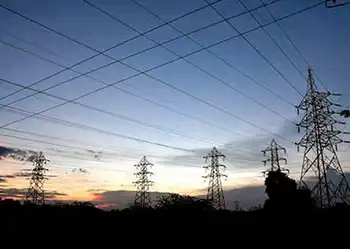Work begins on flywheel frequency regulation plant
All state and local construction-related permits and approvals for the plant have now been received. Beacon will start initial site work while continuing to progress toward closing a $43-million loan with the Federal Finance Bank, with the support of the U.S. Department of Energy and a loan guarantee commitment that Beacon received earlier this year. The loan is intended to support construction of the plant.
“We’re extremely pleased to be breaking ground on our first 20-megawatt flywheel plant this month,” said Bill Capp, Beacon president and CEO. “Thanks to the support of a number of agencies, organizations and individuals, including the Federal Energy Regulatory Commission, Department of Energy, New York ISO, the New York State Energy Research and Development Authority and the Public Service Commission, as well as local officials in Stephentown, we can now move forward with construction.”
Frequency regulation is an essential grid service that is performed by maintaining a tight balance between electricity supply and demand. BeaconÂ’s 20 MW plant has been designed to provide frequency regulation services by absorbing electricity from the grid when there is too much, and storing it as kinetic energy in a matrix of flywheel systems. When there is not enough power to meet demand, the flywheels then inject it back into the grid, thus helping maintain proper electricity frequency (i.e., 60 cycles/second).
Thanks to its ability to recycle electricity efficiently and act like a “shock absorber” to the grid, the flywheel plant will help also support the integration of greater amounts of intermittent wind and solar power resources. However, unlike conventional fossil fuel-powered generators that provide frequency regulation, Beacon’s plant will not consume any fuel, nor will it directly produce CO2 greenhouse gas emissions or other air pollutants such as NOX or SO2.
Related News

Electric shock: China power demand drops as coronavirus shutters plants
BEIJING - China’s industrial power demand in 2020 may decline by as much as 73 billion kilowatt hours (kWh), according to IHS Markit, as the outbreak of the coronavirus has curtailed factory output and prevented some workers from returning to their jobs.
FILE PHOTO: Smoke is seen from a cooling tower of a China Energy ultra-low emission coal-fired power plant during a media tour, in Sanhe, Hebei province, China July 18, 2019. REUTERS/Shivani Singh
The cut represents about 1.5% of industrial power consumption in China. But, as the country is the world’s biggest electricity consumer, the loss is equal to the…




